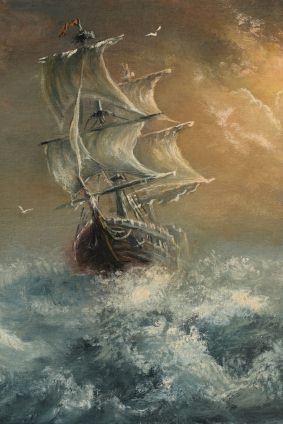
In 1849, when 13-year-old Mary Boland sailed off on The Pilgrim’s Dandy for Boston, the Cork Harbor was in the midst of an identity crisis. Because that was the year Queen Victoria visited Ireland and the British wanted to change the name of the port from Cove to Queenstown in her honor.
This deep-water port had already experienced many appellations during its existence. Legend has it that one of the first colonists of Ireland was Neimheidh, who landed there around 1,000 B.C. Later, it was known as Crich Liatháin because of the powerful Ui Liatháin who ruled in the area from late antiquity into the early 13th century.
In 1750, it was named Cove by Smith, the historian. International upheaval caused Cove to experience rapid growth in the early 19th century. Its natural protection and harbor setting made it important as a tactical naval center, never more so than during the Napoleonic Wars between France and Britain.
Mary Boland was only one of 2.5 million Irish people who emigrated to North America between 1849 and 1950 from Cove Harbor, or Queenstown as it had recently been renamed.
The Irish resented that British intrusion on their beloved Cove Harbor and when they gained freedom from England in 1920, one of the first actions they took was to change the harbor’s name to Cobh which is Gaelic for Cove.
Two tragedies marked this port during the 20th century. In April of 1912, the British ship, Titanic, sunk, only days after leaving Queenstown, her last port of call. More than 1,500 men, women, and children perished following Titanic’s collision with an iceberg. The Titanic Memorial in Cobh brought tears to my eyes when I saw it.
Another tragically notable ship will forever be associated with Queenstown/Cobh. In 1915, 1,198 passengers perished while 700 were rescued from the Cunard passenger liner, RMS Lusitania when it was sunk by a German U-boat off the coast of the harbor. The survivors and the casualties were brought into Queenstown, and 100 of them lie buried in the Old Church Cemetery in the center of town.
Mary Boland was not traveling by a luxury liner, though. She was sold onto an infam
ous “coffin ship” by a woman she trusted to take care of her. Coffin ships were so named because of their lack of seaworthiness and because often, there was not enough food and water aboard to last the duration of the voyage.
As an American of Irish descent, I’ve always been proud of the resilience and strength my ancestors demonstrated on these hellish voyages across the Atlantic. The memory of their courage has sustained me through the toughest times of my life. If they could survive those tragic hardships, I feel I can survive just about anything, too.